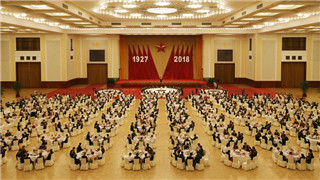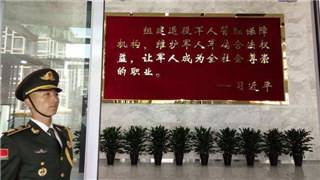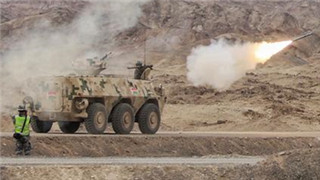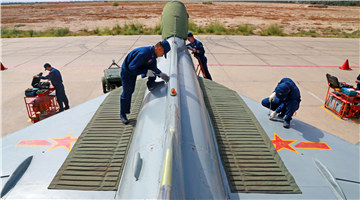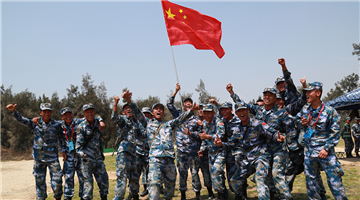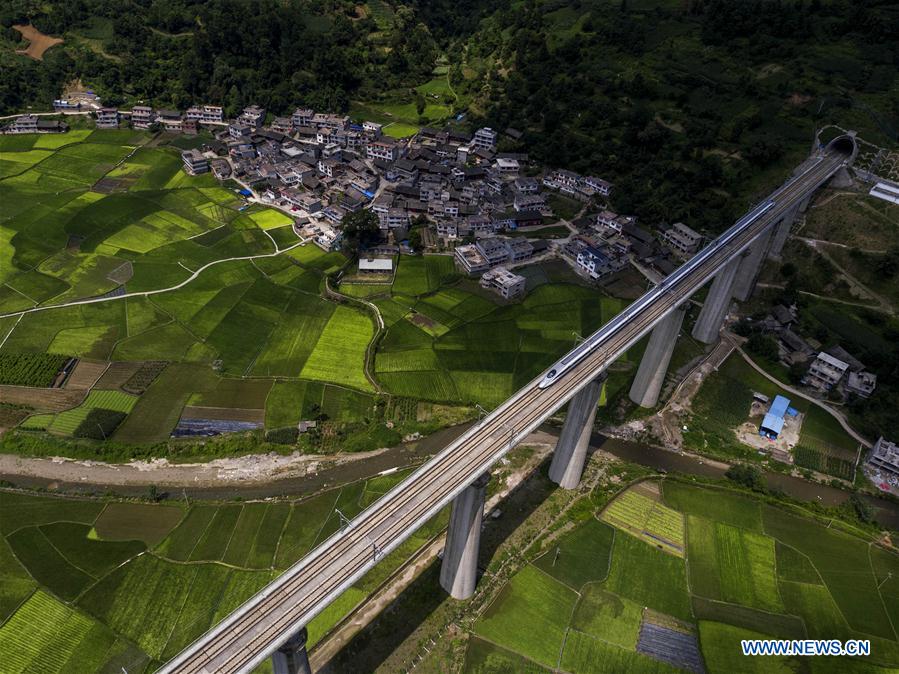
Aerial photo taken on June 22, 2016 shows a bullet train running on a bridge of Shanghai-Kunming high-speed railway in southwest China's Guizhou Province. (Xinhua/Wu Jibin)
AN ECONOMY ON THE FAST TRACK
High-speed rail has helped with the integrated regional development of Beijing, Tianjin, and Hebei Province, a national strategy initiated in 2014.
Wang Ye, from Beijing, takes the C2205 to work every morning. In 24 minutes, the train takes her to Wuqing District in Tianjin, where Wang works at Tieke Zongheng, a train part manufacturing factory.
Among the 150-plus employees in the factory, more than 20 commute from Beijing to the company every day.
"High-speed trains have made the cross-city commute possible," Wang said.
Wuqing has attracted more than 8,200 projects from Beijing over the past five years, including Tieke Zongheng. Investment in these projects has totaled 51.6 billion yuan (7.6 billion U.S. dollars), according to the district government.
The region of Beijing, Tianjin, and Hebei Province has showcased the high-speed railway economy.
High-speed rail is symbolic of the new structure of the Chinese economy, influencing all aspects of society.
By the end of 2017, China's high-speed trains had carried more than 7 billion passengers. Cargo delivery via high-speed trains started in 2016, with more than 500 cities used as pilot areas for express services.
China's high-speed railway has also gone global. In 2014, China completed the construction of its first overseas high-speed rail in Turkey. In June 2015, China and Russia inked deals for 770 km of track connecting Moscow and Kazan. In October 2015, China and Indonesia signed a joint-venture on the construction of a high-speed rail between Jakarta and Bandung.
Huang Yanghua, an associate researcher at Chinese Academy of Social Sciences, believes high-speed rail had saved time, helped integrate the regional economy, boosted the flow of talent and information, and reshaped China's economic map.
